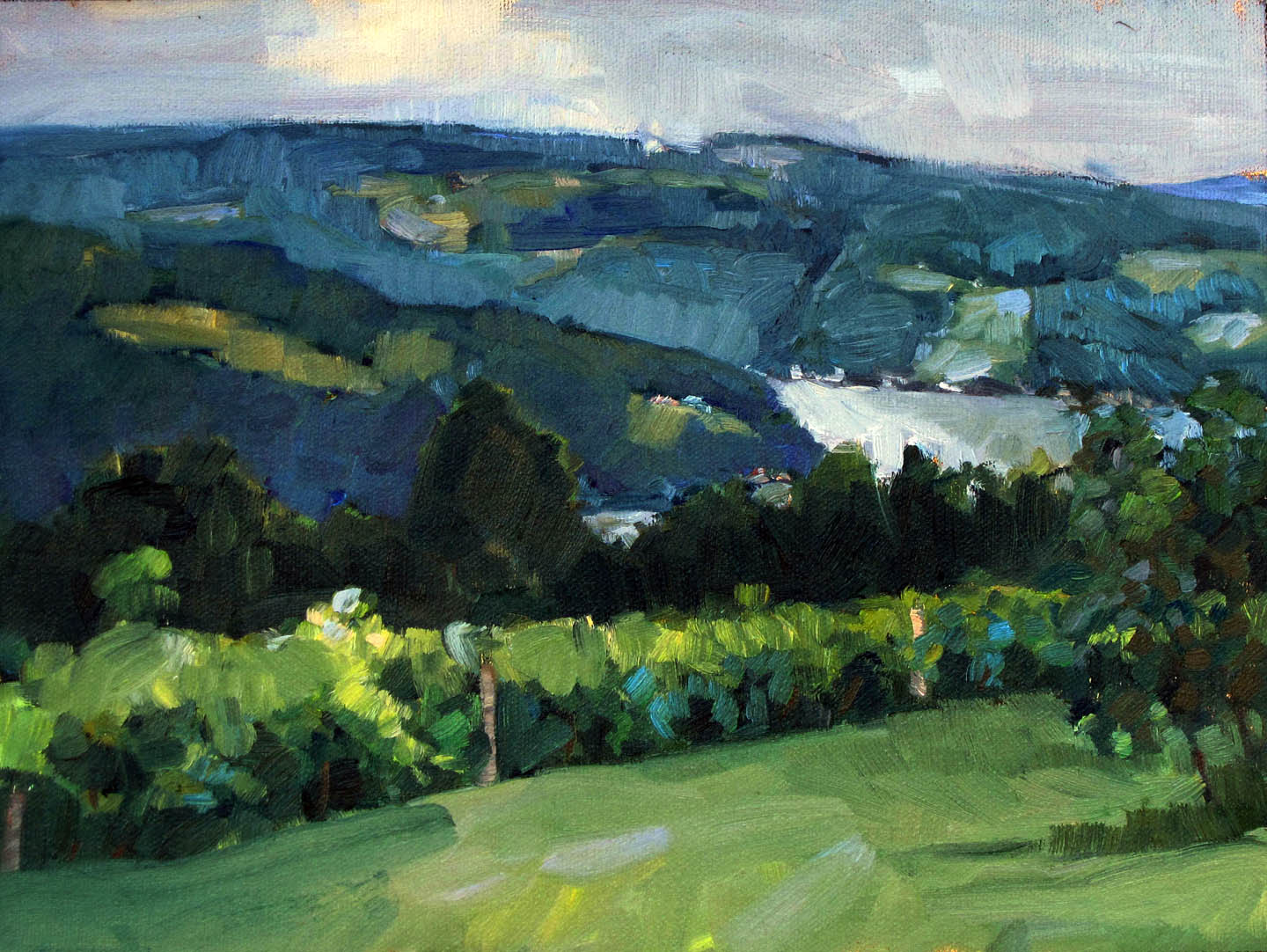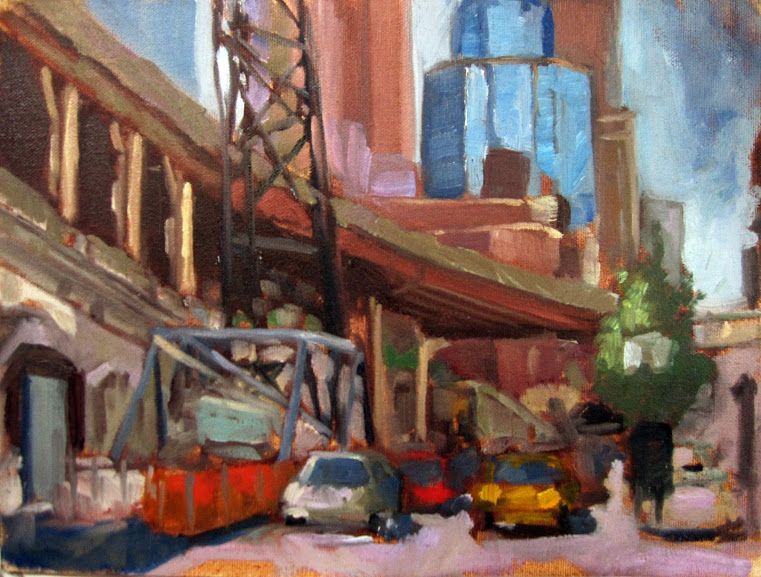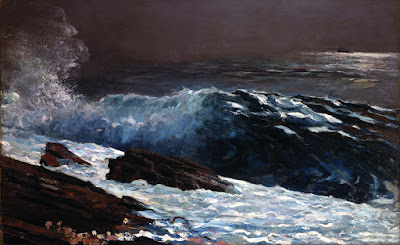Notan differs from value study because it is based not just on what we observe. It is the orderly restriction of shapes into patterns. It is reality subservient to beauty.
 |
|
Sextant, c. 1917, Marsden Hartley, oil on panel, courtesy Philadelphia Museum of Art |
When I saw this collection of eight paintings based on the color orange, I realized they could demonstrate notan as neatly as traditional value-based examples do. Orange is uniquely high in chroma, so it’s easy to notice. It’s easy to see how the artists made a pattern based on it. From there, it’s not a great leap to see how great paintings can be constructed around a value-pattern too.
 |
|
The Gossip, 1912, John White Alexander, oil on canvas, courtesy Philadelphia Museum of Art |
Notan is a traditional concept that refers to the harmony of light and dark elements in a painting. It’s been integral to East Asian art for centuries, and it was introduced in the West in the middle of the 19th century.
On paper it is easy to see that dark shapes do not exist without boundaries, which are made by a surrounding area of light. Equally, light shapes don’t exist without dark to define them. (This is the Chinese philosophical construct of yin-yangin a nutshell.)
 |
|
Card, 1971, Helen Frankenthaler, color lithograph with crayon, courtesy the Art Institute of Chicago |
This concept of notan reached its apogee in the East Asian artform of brush painting. This was the fourth and final discipline a Chinese scholar-gentleman was expected to learn, because it was the most difficult. Through brush painting, a Chinese noble demonstrated his mastery over the art of line, which had supreme artistic (and cultural) importance.
 |
|
Excavation at the White House, c. 1941, Mitchell Jamieson, watercolor on paper, courtesy Smithsonian American Art Museum |
The idea of notan came to the west with our 19thcentury mania for all things Asian. It was introduced as a teaching system by Arthur Wesley Dow, who wrote the definitive book on composition for twentieth-century painters. He taught students to restrict the infinite range of tonal values in the visible spectrum to specific values—perhaps black, white and one grey. He wanted students to realize that all compositions are, underneath, a structure of light and dark shapes.
 |
|
Beth, 1960, Morris Louis, acrylic on canvas, courtesy Philadelphia Museum of Art |
But before Dow ever let his students get that far, he had them start with line drawing. Composition is above all about cutting the picture frame into shapes, which Dow called “space cutting.” We’re doing that every time we think about negative space, for example.
 |
|
Untitled, 1958, Kenneth Noland, acrylic on canvas, courtesy Smithsonian American Art Museum |
Only when his students had created beautiful shapes did he allow them to start adding value. First black, then greyscale, and then—step by slow step—they could add color.
 |
|
Child in Orange Dress with White Pinafore, 1911, Egon Schiele, gouache, watercolor and pencil on paper, courtesy Sothebys |
Today we use the word notan as a noun, as a substitute for a value study before we paint. But the word never meant that to Dow or in the eastern cultures from which he borrowed it. Notan differs from value study because it is based not just on what we observe. It is the orderly restriction of shapes into patterns. It is reality subservient to beauty.
 |
|
Church with Red Roof and White Walls, 1914, Maurice Utrillo, oil on canvas, courtesy Barnes Collection |
Of course, notan encourages a specific aesthetic, one that we’ve pretty much abandoned over the last century. But it’s worth practicing and understanding, as a way to start thinking about the important tenets of composition.
A special thanks to Bruce McMillan, for cheerfully sharing his collection of orange paintings.






























